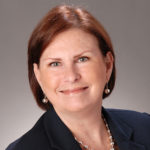Q. How do I accurately define the appropriate qualifying income/affordability levels in estimating demand for my project?
A: The significant growth of the older adult population (specifically, the older baby boomers) over the next several years will present new opportunities for senior living community owners, operators, developers and investors. Although the increase in the demographics will be dramatic, the housing options available to those older adults will be driven, in large part, by their financial resources.
Accurately defining the appropriate qualifying income criteria for a specific project is a critical assumption in assessing potential market demand. This affordability issue, which has not always been appropriately quantified, makes the need for a market study more important than ever.
Research has confirmed that the true cost of living for an age- and income-qualified older adult before and after moving into a market-rate rental independent living community often are quite similar, with the true cost comparison frequently favoring senior living communities. For example, a rental independent living community that includes a meal program, housekeeping, flat linen service, transportation and utilities, along with the apartment, is estimated to account for 60% to 65% of an older adult’s living expenses. If the rent for this community is $3,500, then this person would need a total before-tax qualifying cash flow income of $64,615 ($3,500 / 65%), before incurring any spend-down of other assets. This cost of living factor, obviously, would be adjusted based on the services included in the rent.
An active adult, service-free community would account for 35% to 40% of the living expenses, whereas assisted living and memory care could cover up to 80% to 85% of the living expenses. The remaining portion of the cash flow income is used for personal and discretionary items and activities outside of the senior living community.
Other financial resources can be used to pay for market-rate senior housing, including other savings/investments, financial assistance from family, Veterans Affairs benefits and long-term care insurance. Those resources can be difficult to accurately quantify, however, and typically are considered to be forecasting safety margin when evaluating the demand for new senior housing.
Lynne Moore is president of MDS Research Company Inc., a national senior living and healthcare consulting firm based in Fort Worth, TX, that has been serving clients for over 50 years. MDS is a two generation company – she is following in Jim Moore’s footsteps. Ms. Moore is responsible for all MDS market research-related projects involving all aspects of Senior housing and health care. Lynne Moore can be reached at (817) 731-4266 or [email protected].
A version of this column will appear as “You’ve Got Questions, We’ve Got Answers” in the June 2023 issue of McKnight’s Senior Living.
The opinions expressed in each McKnight’s Senior Living guest column are those of the author and are not necessarily those of McKnight’s Senior Living.
Have a column idea? See our submission guidelines here.


